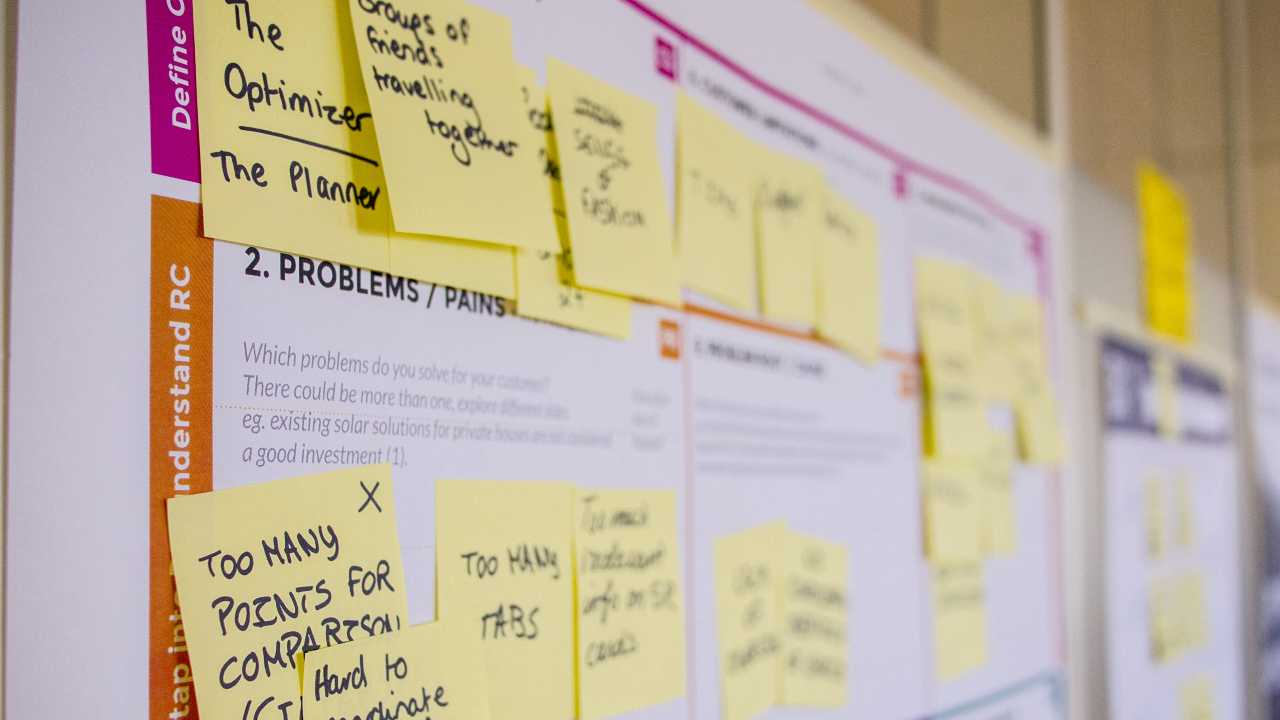As is required by what seems to be tech giant tradition, Ariba held their annual conference this week in Las Vegas to update all onlookers on what they could expect from the cloud procurement solution provider in the coming year. It is an exciting time in the e-procurement space as the top vendors continue to make key acquisitions and develop features in the quest to provide solution suites that cover the full spectrum of procurement activities (whether that be in the direct and/or indirect space). It is my pretension that none of the top vendors (ie. Ariba, Coupa, Ivalua, etc) have arrived at this holy grail just yet but that we are coming increasingly closer. Here is what Ariba has in the hopper for 2018:
First, A Bit of Context
Before diving into the focus for Ariba Live 2018, it is important to highlight a few key contextual points:
- Ariba was officially acquired by SAP in the fall of 2012. They have therefore been part of the SAP ecosystem for just over 5 years. However, based on my observations and many conversations I’ve had, I estimate that the actual time they’ve been hard at work on product development has only been 2-3 years. The rest of the energies have been spent on typical post M&A integration of the group into the SAP structure and culture and ensuring the surrounding infrastructure (ie. Ariba Connect support platform) was re-engineered for scalability.
- As part of the above integration, Ariba changed all product names last year to simply their offering and align with SAP terminology. Although this somewhat necessary, it has caused confusion with customers and prospects who are now playing catch up to understand the new terms. Here is a summary table of the newly labeled modules so you can follow along with the below points:

And Now for the Main Event

The conference was divided into two main parts: the general keynote sessions, which focused more on the future and big themes, and the breakout sessions and conference floor, which focused more on current capabilities and the nuts and bolts. The big theme of the conference general sessions was purpose. This was loosely defined at first but manifested itself by a focus on new user experience/interface, diversity and cognitive features in the product suite.
General Sessions
On day 1, Ariba spent most of the keynote time highlighting its commitment to its corporate social responsibility and the initiatives that are underway, such as helping Step Up for Students in their quest to facilitate access to better educational outcomes for kids who don’t have access to education today. Ariba’s president, Barry Padgett, challenged the audience to chase purpose in the continuous improvement activities of their procurement organizations, noting that “what’s good for the world is good for business”. Although inspirational, this first day of keynotes left me disappointed as it remained quite esoteric in nature. I was hungry for features, product vision and roadmaps and remained so after the first morning. However, Barry promised that the breakout sessions and day 2 would deliver on this content but that the stage needed to be set. Thankfully, things did get more tangible in day 2.
First, Ariba’s Chief Product Officer, Sudhir Bhojwani, tied things back to purpose by saying that the Ariba suite’s purpose is to make people’s jobs simpler. One concrete example is that Ariba is shifting the focus from module-based user interface (UI) to a personas-based UI. This is most certainly not a new concept (the Business Process Management space has been shouting about this for years!) however, it is good to see that Ariba is starting to make this shift. Ariba is working on updating its user interface to reflect people’s job roles instead of being structured around their solution modules. Using the example of a Category Manager, the rationale is that the person assigned to this role will be doing things across modules in their day-to-day (sourcing activities, validating supplier certificates, helping resolve contract term and condition disputes, etc.). Therefore, why should the burden of remembering which module needs to be used to execute a specific action reside with the user? Ideally, the complexity of the modules is hidden from the users and they have a tailored, “one-stop-shop” cockpit based on the activities they need to perform in their day-to-day. From a technical perspective, this will add an additional application layer that needs to be thought through, tailored and maintained during implementations. If you are to use personas, there will need to be an increased focus on your end users during solution design. Ariba should deliver the first personas in 2H 2018.
Second, an Ariba demo team built upon the purpose theme by demoing new functionalities and user interface tweaks in the sourcing module that will allow companies to better execute on their diversity programs enabling them to “be more purposeful about who and where we are buying from”. Tangibly, this means that there will be new functionality to maintain and measure diversity campaign goals throughout the procurement process, an example goal being “source 30% of chemical commodities from Women-Owned businesses”. The example demoed showed how a category buyer would be reminded of the diversity goals along each step of the sourcing process including in the supplier response evaluation scenarios where they could compare the lowest bidder scenario vs the scenario which brought the company closer to their diversity goals. This was great to see but, in my opinion, before clients can consider taking advantage of this functionality, they first need to take care of operational process standardization & automation to secure the bandwidth needed to work on these initiatives. Procurement function maturity should be high before you start looking at this functionality. However, another interesting feature that isn’t as prohibitive and was shown in this demo is that Ariba is finally starting to support integration with Microsoft Office and Google Single Sign-On for both buyer and supplier users. As Ariba is investing about 30% of its overall development budget on features for suppliers, this will become a differentiating factor when it comes to supplier on-boarding and adoption as they roll this out. The release date for all these features is also 2H 2018.
Third, we finally saw tangible use cases coming out of last summer’s IBM-Ariba cognitive partnership announcement. Presenting in company of the IBM Chief Procurement Officer, Bob Murphy, Ariba demoed the use case of a contract owner trying to analyze the impact of new legislation on a repository of 80,000 contracts. Today, solving this risk minimization problem requires a team of people with an intimate knowledge of your existing contracts who can target the contracts that need to be amended based on experience and tribal knowledge. Either that or you need an army of people to read through all those contracts and find which ones need to be amended. By leveraging IBM Watson APIs, if all your contracts are digitized and use standard clauses in Ariba, you can literally identify precisely which contracts need to be amended with the push of a button. Of course, as with any advanced features, the underlying assumption is that your data is of high quality and is structured so this will remain the biggest challenge to fully benefit from these cognitive functionalities. Early versions of this use case should ship during the summer and I am excited to see what other use cases will come out next.
Breakout Sessions and Conference Floor
With dozens of booths and sessions running in parallel over the two days, it was impossible to cover everything but here are the main highlights of solution improvements and some of my “Ariba pet peeves” which remain unaddressed:
Solution Improvements
There is way too much here to cover in a single post but here are some of the things that stuck with me:
1. Speed of Innovation
Ariba is starting to do solution releases every month vs every quarter and the investment to pump out features is massive. Customers will have to devote more time on reading release documentation to determine what features they want to implement due to this blistering development pace.
2. Increased Support for Direct Procurement Use Cases
Ariba is hard at work on making their Sourcing and Supply Chain Collaboration (SCC) solutions much more robust when it comes to supporting direct procurement use cases. However, SCC 1.0 has been out since December 2014 and sourcing for direct 1.0 has been out since December 2016 so there are functionalities already enabled for direct on these two fronts. In a nutshell:
- Sourcing: Import BOM information from PLM systems for sourcing, create purchasing info records/contracts in SAP after sourcing events.
- SCC: Support for transmission of basic procurement process documents through Ariba Network (PO, Confirmation, ASN, GR Notice, Invoice, Payment Notice, etc) and support for scheduling agreements, subcontracting, consignment, Evaluated Receipt Settlement, Return POs, Credit Memos, etc.
There will be a focus this year on deepening these functionalities and adding new use cases; principally:
- Sourcing: Deeper capabilities around BOM management within the sourcing module (ie. BOM version compare, complex cost breakdowns, trend reporting)
- SCC: More basic scenario variations and integration with SAP logistics concepts (ie. Handling Units, packaging instructions, labels, etc and inclusion of the quality collaboration process (ie. with SAP Quality Management module)
Even if all this is supported there are still some usability issues in my opinion around collaboration with the supplier when the “vanilla” scenario goes off-track (ie. to discuss a specific process instance gone wrong). That’s why I am excited that Ariba is rolling out:
3. Supplier Messaging Within the Tool
The integration with a supplier is all well and good when the process goes off without a hitch but when snags do occur (and they always do), a major pain point of using the Ariba Network has been that you needed to deal with exceptions outside the tool via e-mail or over the phone. Hopefully, by being able to keep a message thread for a specific document and/or process instance, the churn around process exceptions will be reduced.
4. Supplier PDF Invoice to Network
As of this year, those pesky suppliers that you can’t get on-boarded to the network can start sending PDF invoices via e-mail to the Ariba Network and these invoices will be converted into electronic invoices using Optical Character Recognition (OCR) technology meaning there will be no more need to use Invoice Conversion Services (ICS) if you can get everyone to stop sending you paper invoices. However, before you join me in screaming from the rooftops, this is still very new so expect some error handling kinks if the invoice doesn’t come in perfectly.
5. “Native” Integration with SAP (Process & System)
I put native in quotation marks because this term has been thrown around to describe integration between SAP and Ariba since the acquisition in 2012 but Ariba software was never built on native SAP technology (ie. ABAP programming language). But although it is not native integration, both from a process and systems perspective, Ariba has matured tremendously in their integration with SAP ERP.
From a process perspective, we are getting to a point where most of the concepts that you can leverage in SAP ERP (ie. handling units, one-time vendors, scheduling agreements, etc) are either supported or on the roadmap for the next year. Of course, there are still some things outstanding and sometimes only 70-80% of standard fields in a document integration are out-of-the-box but the Ariba coverage of SAP functionalities is reaching a critical mass when compared to other vendors. This means that there should be less surprises and “surprise” interface development costs when trying to integrate a mature SAP environment with Ariba products.
From a system perspective, with the release of the Cloud Integration Gateway (CIG), I feel like we finally have an enterprise-grade Ariba integration tool on the horizon. Nothing against the Integration Toolkit (ITK) but I am happy new clients won’t have to learn how to use JAR files… Full disclosure, I’ve yet to work with the new tool personally as it is still new and I expect there will inevitably be early adopter pain but it looks promising. However, this means that companies which have spent considerable amounts standing up ITK or SAP-PI integration will be left to their own devices or will have to reinvest into new integration technology if they want to stay on-board the innovation train.
6. A Whole Whack of Open APIs
Whether it be for reporting in another tool or to export transactional data mid-process, Ariba is releasing a whole set of APIs that can be used to gain access to your data in real-time. Very glad this is getting implemented as the data sometimes felt trapped in the application.
7. Customer Influence Platform vs. Enhancement Requests
Product enhancement requests will no longer be launched into oblivion… You will create a product enhancement request that will be viewed by all other Ariba customers who can vote on the most impactful new functionalities for them. This means you have an added incentive to stay in touch with fellow companies that use Ariba to amass a critical number of votes on requests you want to see come to life. I believe this approach is being rolled out to SAP as a whole and I am excited to see where this concept goes. It is a great way to get your user base engaged in product development in a meaningful way.
Outstanding Pain Points
There are a few things that didn’t come up this week that remain key pain points for lots of clients and that need to be addressed to get Ariba to the next level. Innovation is all well and good but if your doctor gets you new shoes to resolve your back hernia, you’re not much further ahead.
1. Ariba Shared Services Cross-Training on SAP ERP / S4
When implementing SAP Ariba with clients, I still get the sense that a healthy portion of the Ariba shared service teams that work with clients day-to-day during implementation lack key knowledge of how SAP ERP (ECC or S4) works and how it ought to work in conjunction with the different Ariba modules. Although this is not the case at the product development and senior leadership level, as evidenced by lots of face-to-face conversations this week, it is still a major roadblock to ensuring consistent delivery quality across the board. I know Ariba is a back-end agnostic solution but I can’t accept this reason for delivery issues from an SAP-owned company.
2. Support for SAP statistical cost elements (such as WBS elements and internal orders) & Interco Transactions
For business units which rely heavily on the above in their back-end SAP system, it is impossible to Go-Live on the Ariba solutions until this point is resolved which means some customers are waiting in limbo between two systems while they want to give Ariba 100% of their footprint.
3. Support for Non-Enabled Direct Supplier Invoice Management in Ariba
If Invoice Management in Ariba is to be the single point of entry for SAP Procure-to-Pay invoicing, the Procure-to-Pay suite needs to support three-way match and invoicing for SAP Direct POs for non-enabled suppliers. Otherwise, until customers get to that coveted 100% of suppliers enabled on the Ariba Network, there will always be exception scenarios of invoices that can’t be entered in Invoice Management and need to be entered in the back-end. The following question is therefore often asked: “Why would I add an additional invoice management system in my landscape when I will need to go back and use my old one in exception scenarios anyways?”. This is only true for customers using Invoice Management for both direct and indirect use cases.
4. Manual Invoice Entry User Interface
Although the goal of the Ariba Network and Invoice Management modules is to bring Invoice Automation into the high 90% range, there will always be reasons to manually enter invoices. For Accounts Payable technicians, entry speed is the name of the game (ie. keyboard only). Currently, the Invoice Management interface requires that the user perform multiple clicks to enter an invoice. As a Change Management item, this is quite tough to manage as users feel they are going back in time.
In Closing
All in all, this was a top-notch conference. The organization and production value was definitive and there was valuable theoretical and practical content for all profiles from prospect to longtime client, beginners to expert. Based on what I am seeing, I believe the Ariba suite should reach full maturity within the next 2-3 years across the full Procure-to-Pay spectrum, both in direct and indirect. If so, they would most likely be the first company to do so. The software vendors in this space are all in transformation mode so it is exciting to watch the race. In the meantime, cloud P2P implementations remain quite complex for any solution, especially in the downstream (procure-to-pay) domain, as customers and solution integrators need to be very familiar with the feature release roadmap to correctly scope and plan implementation initiatives. Business case assumptions should also be validated against this same product roadmap to ensure the parts of your business considered in the implementation will not hit any roadblocks.
Till next time,
———————————
What did you think about Ariba Live 2018? Is there an announcement that stood out in your mind? What are the features you would like to see in the roadmap? Let me know in the comments.
If you liked this post, why not Subscribe
Last Updated on January 7, 2021 by Joël Collin-Demers


